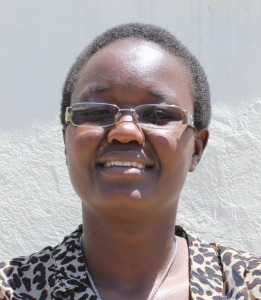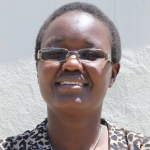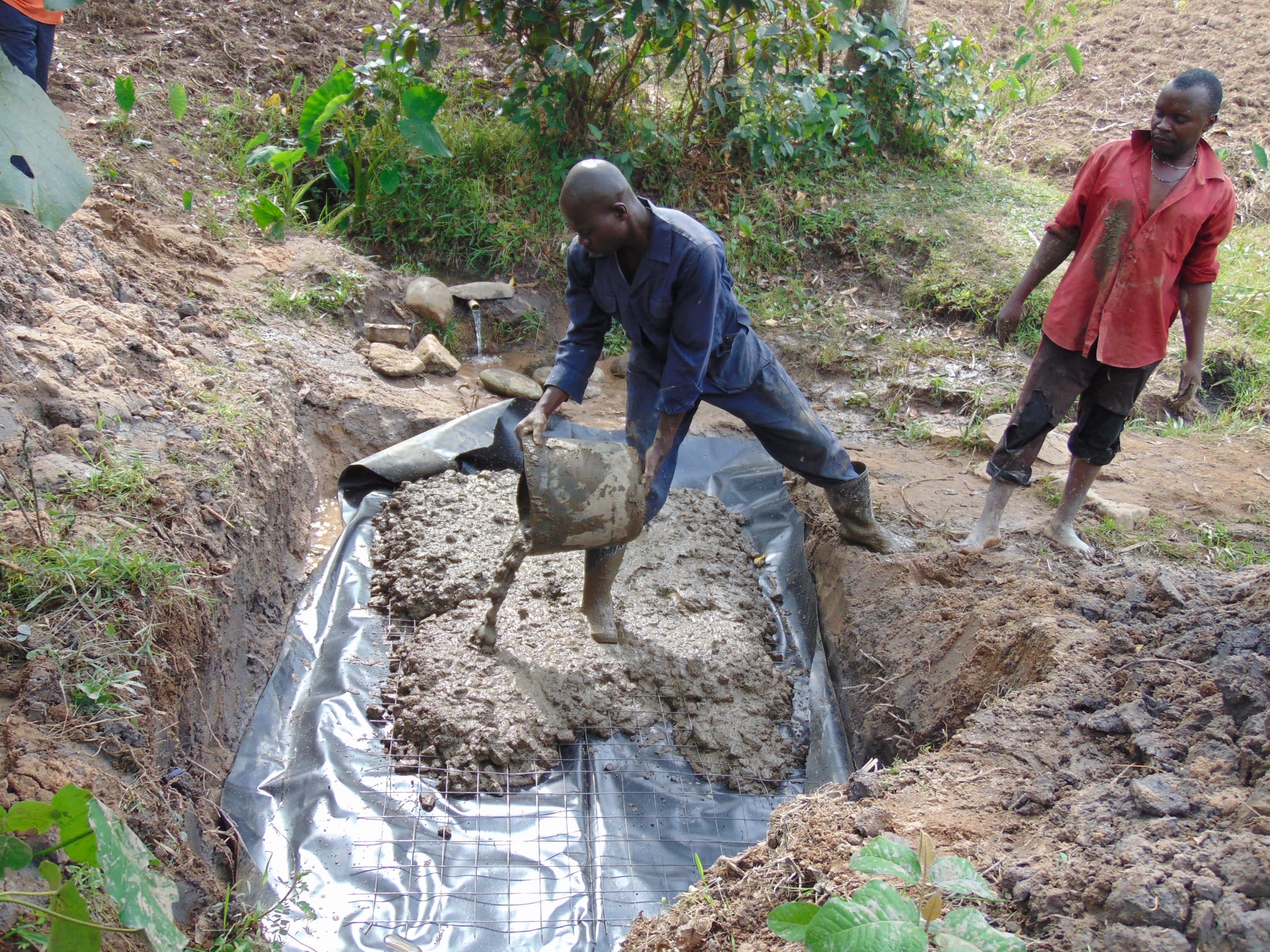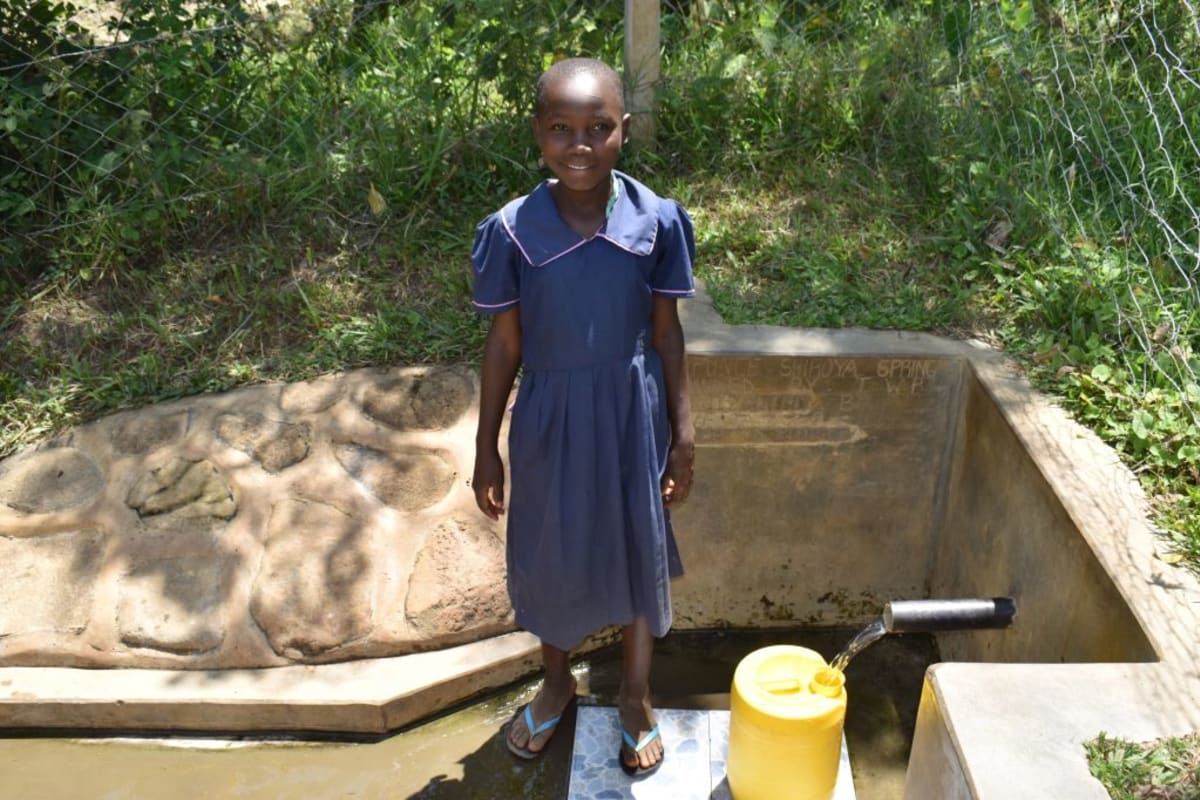The area around Alfunce Shiroya Spring is slightly sloped and well-vegetated. The surrounding sugarcane fields and trees make the environment cool and green. The homes are close to each other, with roads connecting this village to others.
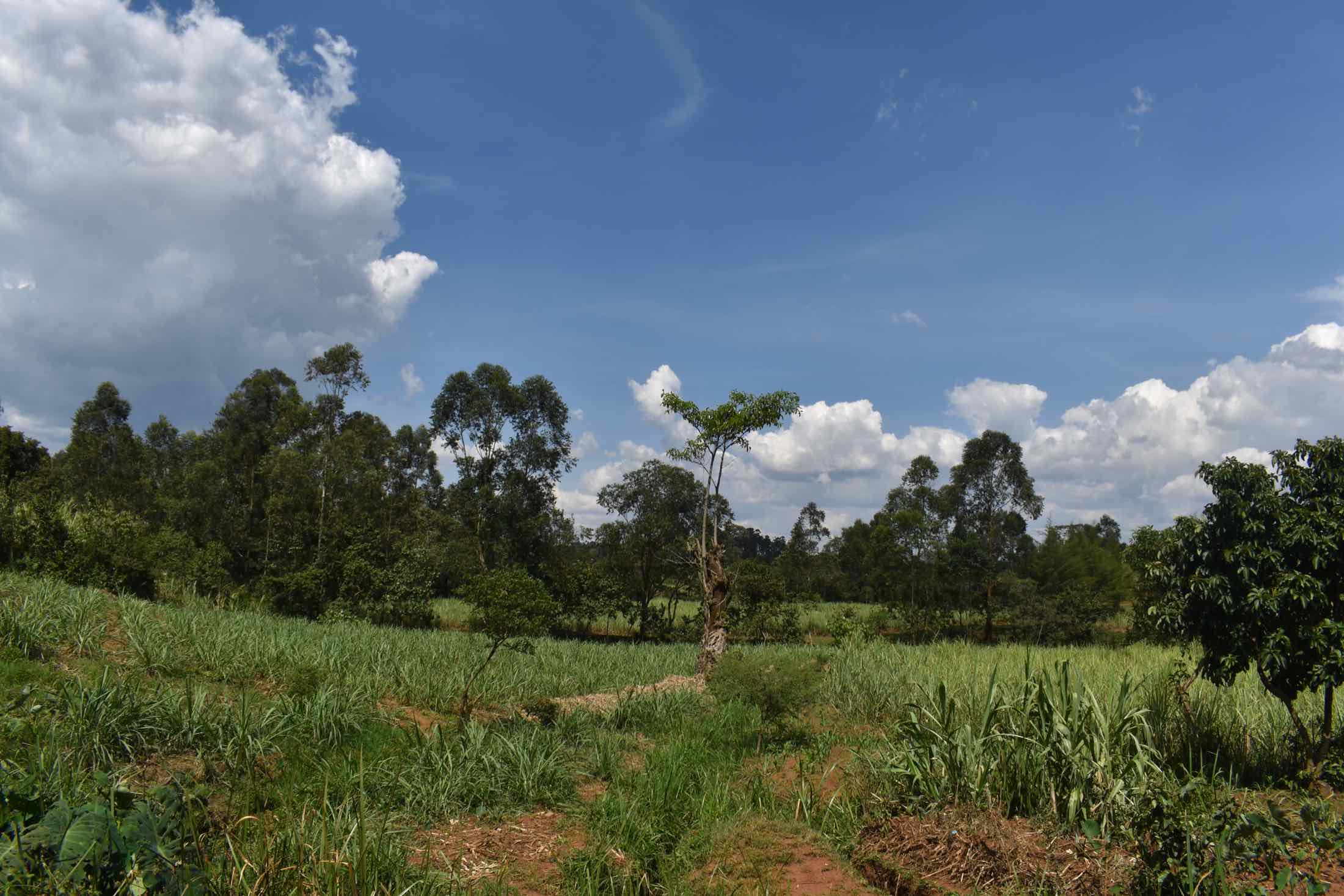
The most common livelihood in this community of 200 is sugarcane farming, which helps provide for families. Uniquely, community members work together during harvesting and planting seasons, and community members freely share roads to ease transporting sugarcane to the factory.
Community members waste a lot of time instead of doing other productive things while waiting in line and fetching water using a scooping jug to fill a container, which can take quite a while. They wake up early to fetch drinking water because they believe it is cleaner to drink in the morning than the rest of the day. Then they revisit the spring in the afternoon or evening to fetch water for other domestic uses. Women and girls are the most affected, as they bear the majority of the responsibility for collecting water.
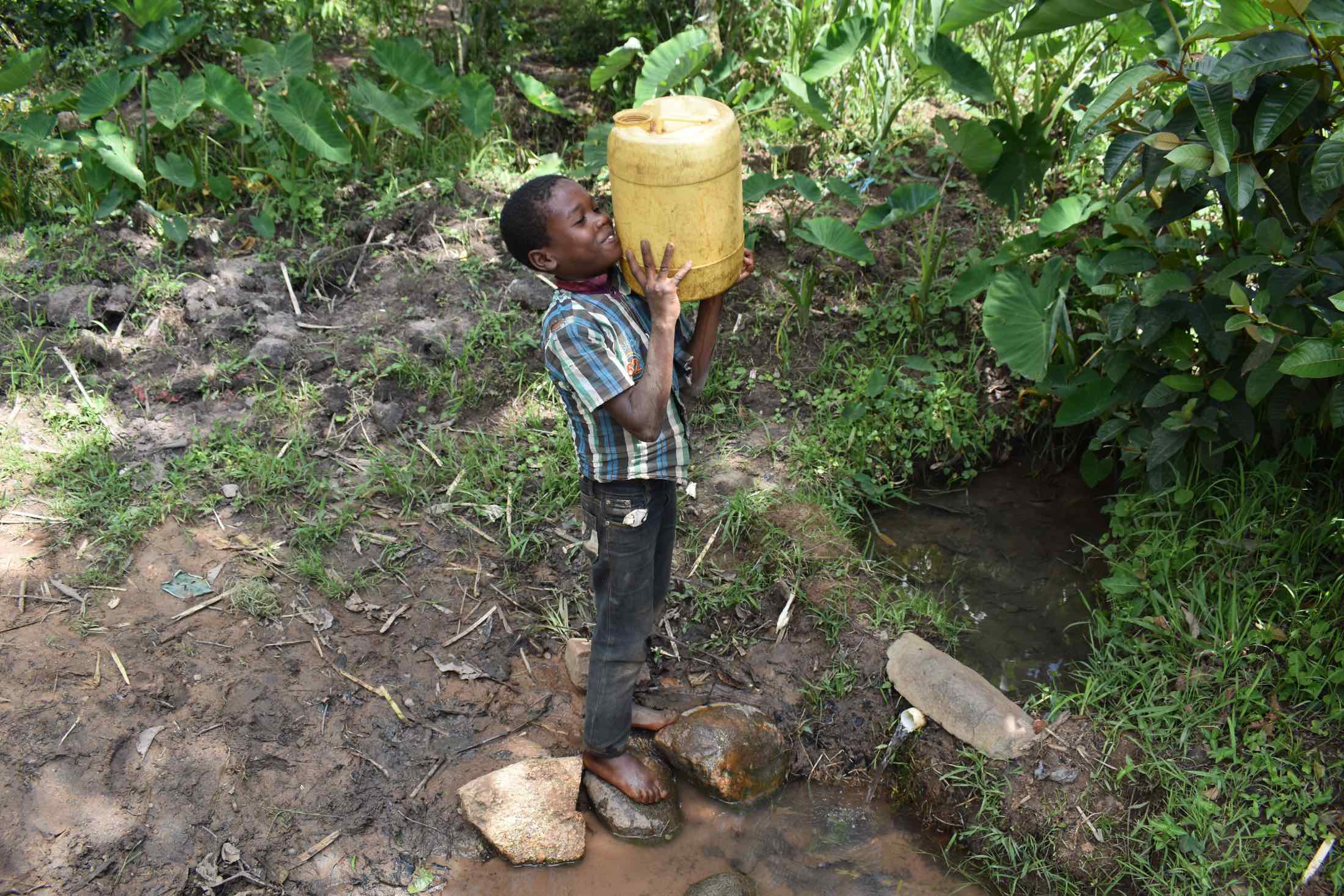
Melvin S., a young boy from the community shown above, shared, "It is not easy to fetch water from an open source of water. Sometimes we fall, especially during the rainy season. The spring is so slippery, and we injure ourselves a lot."
The water source is open to contamination from community members washing clothes, bathing their children, and farming near the spring, making the water unsafe for consumption.
During the rainy season, the community's children are most affected with coughs and itchy rashes, while others also become sick with diarrhea and typhoid. Community members are spending more money visiting the hospital, which has left some begging for money to support their families.

"I have suffered a lot because of typhoid, due to my only source of water being open to contamination. We are always advised to boil water when we visit the hospital, but we ignore it. I hope that when the spring is protected, I will live a healthy life free from typhoid and any waterborne diseases, because the spring will be protected, and the issue of water contamination will be of the past," said Mr. Alfunce Shiroya, a 53-year-old farmer shown above at the spring.
What We Can Do:
Spring Protection
Protecting the spring will help provide access to cleaner and safer water and reduce the time people have to spend to fetch it. Construction will keep surface runoff and other contaminants out of the water. With the community’s high involvement in the process, there should be a good sense of responsibility and ownership for the new clean water source.
Fetching water is a task predominantly carried out by women and young girls. Protecting the spring and offering training and support will, therefore, help empower the female members of the community by freeing up more of their time and energy to engage and invest in income-generating activities and their education.
Training on Health, Hygiene, COVID-19, and More
To hold trainings during the pandemic, we work closely with both community leaders and the local government to approve small groups to attend training. We ask community leaders to invite a select yet representative group of people to attend training who will then act as ambassadors to the rest of the community to share what they learn. We also communicate our expectations of physical distancing and wearing masks for all who choose to attend.
The training will focus on improved hygiene, health, and sanitation habits in this community. We will also have a dedicated session on COVID-19 symptoms, transmission routes, and prevention best practices.
With the community’s input, we will identify key leverage points where they can alter their practices at the personal, household, and community levels to affect change. This training will help to ensure participants have the knowledge they need about healthy practices and their importance to make the most of their water point as soon as water is flowing.
Our team of facilitators will use a variety of methods to train community members. Some of these methods include participatory hygiene and sanitation transformation, asset-based community development, group discussions, handouts, and demonstrations at the spring.
One of the most important issues we plan to cover is the handling, storage, and treatment of water. Having a clean water source will be extremely helpful, but it is useless if water gets contaminated by the time it is consumed. We and the community strongly believe that all of these components will work together to improve living standards here, which will help to unlock the potential for these community members to live better, healthier lives.
We will then conduct a small series of follow-up trainings before transitioning to our regularly scheduled support visits throughout the year.
Training will result in the formation of a water user committee, elected by their peers, that will oversee the operations and maintenance of the spring. The committee will enforce proper behavior around the spring and delegate tasks that will help preserve the site, such as building a fence and digging proper drainage channels. The fence will keep out destructive animals and unwanted waste, and the drainage will keep the area’s mosquito population at a minimum.

 Protected Spring
Protected Spring
 Rehabilitation Project
Rehabilitation Project










